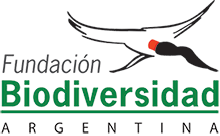Protected Wild Area (ASP) “El Pantanoso"



In the year 2016, thanks to a donation from World Land Trust we were able to acquire the estate El Pantanoso and thus, conserve 4,416 hectares of Yunga Forests adjacent to the Calilegua National Park.
The ASP El Pantanoso is a natural reserve owned by Fundación Biodiversidad that is located within the Yungas Biosphere Reserve, in the central-eastern zone of the province of Jujuy bordering Salta, and covers 4,416 hectares of forests of the Southern Yungas.
The Southern Yungas are subtropical jungles, forests and montane grasslands, that extends like a narrow belt along the sub-Andean mountain ranges and the eastern Andean mountain range in Bolivia and Argentina
Although they represent only 2% of our country, the Southern Yungas of Salta, Jujuy, Tuchmán and Catamarca, they possess a rich biodiversity and are home to the highest rate of endemic flora and fauna in Argentina, containing 50% of the bird species of Argentina
The creation of ASP El Pantanoso El Pantanoso is part of a strategy of our organization aimed at consolidating conservation actions in an area neighboring Calilegua National Park, which would also extend conservation benefits from this National Park to the border with Salta province.
Studies with camera traps reveal the richness of ASP El Pantanoso trampas cámara revelan la riqueza del ASP El Pantanoso


Importance of the Yungas
The Southern Yungas constitute one of the most diverse and scenically beautiful biomes in Argentina: providing habitats to more than 30% of Argentina’s mammal species, 50% of bird species, and 30% of amphibian and reptile species.
This forest captures and retains copious summer rainfall like a sponge, regulating throughout the year the supply of water to numerous rivers and streams that rise at the top of the mountains and that are vital to the socioeconomic development of the communities that are located downstream.
In 2002, UNESCO declared the Yungas Biosphere Reserve, which covers an area of 1,300,000 hectares, of which about 30% belongs to the province of Salta and about 70% belongs to the province of Jujuy. This large region includes different national and provincial protected areas, which act as key conservation centers, but most of the land is privately owned.
The participation of the private sector in its conservation is one of the main challenges for the future, mainly in terms of guaranteeing the environmental connectivity of the forest masses.
Threats
Clearing for agricultural reasons is the main threat to the Yungas. The advance of the agriculture frontier for crops poses a fundamental threat to the species that inhabit the Yungas, due to habitat loss and fragmentation.
Forestry activity carried out in the form of mining is another strong threat to the region, in which the most valued tree species are exploited without sustainable management plans. The lack of controls allows the excessive felling of the most valuable species.
Poaching is a serious problem for the different species of the Yungas, some of which are threatened with extinction, such as the jaguar and the American tapir. The lushness, isolation, and cultural aspects of the region makes poaching very difficult to prevent and control on a regular basis.
The Yungas are located in lands on the Northwest sedimentary basin, so hydrocarbon exploration poses another serious threat in the region, both because of the exploration activities themselves, and because of the greater accessibility for poachers, as a result of the construction of roads.






ASP El Pantanoso
The ASP El Pantanoso borders the south of the Calilegua National Park, which is the largest national park in the Yungas ecoregion(76,000 hectares), forming a single block of protected forest up to the border of the province of Salta. Baritú National Park is found in northern Salta, which makes up about 72,000 hectares of the Yunga.
The strategic location of the ASP El Pantanoso makes it a natural part of the Yungas ecological corridor that should exist between both national parks, to ensure the permanence of the species key to the ecosystem of the Yungas, such as the jaguar.
More than 123 species of trees and 144 species of butterflies have been identified in the lands of the Calilegua National Park and the ASP El Pantanoso. It is estimated that some 350 species of birds could inhabit the area, among which it is worth mentioning the golden-necked maracaná (Primolius auricollis), the blue-fronted parrot (Amazona aestiva) and smaller psittacines, such as Aratinga mitrata, among others.
In addition to the existence of about 120 species of mammals, it is known that El Pantanoso functions as a corridor zone for many threatened species that have been detected in the valleys of its rivers (Morado and Pantanoso) by their tracks and through the use of traps cameras, such as the jaguar (Panthera onca), the tapir (Tapirus terrestris), and two species of peccaries.
The large biological diversity that characterizes the region has sparked the interest of different research groups, reflected in the fact that in recent years, more than one hundred research projects have been carried out in the area.
The main objective of conservation in this nature reserve is the preservation of the Southern Yungas habitat, which makes up the highest number of species of trees, insects, birds, and mammals, because it is placed in one of the most biodiverse ecoregion of Argentina.
The jaguar is another conservation priority for the reserve and the country, since it has been declared a Natural Monument in 2001 and has a National Plan for its conservation at the national level and others at the regional level.
The presence of the jaguar in the reserve has been widely documented by trap cameras installed in ASP El Pantanoso since 2009 and it continues to be one of the species with a permanent presence, so the reserve also constitutes a refuge for this species that is seriously threatened by poaching.
Survey of the Floristic Diversity of the El Pantanoso Private Reserve. Antonio Palavecino. January, 2023.
This document contains information on the results of the survey of floristic diversity in the "El Pantanoso" Private Reserve, within the Yungas Biosphere Reserve and which constitutes the northeast buffer area of the Calilegua National Park, Libertador General San Martin Department, Jujuy province. The registration of 27 new plant taxa for the reserve is provided.
Survey of chiroptera in El Pantanoso (Jujuy). Yanina Bonduri, Soledad de Bustos and Sofía Vázquez. January, 2023.
In the Jujuy Yungas, 36 species of bats inhabiting different microhabitats have been recorded, of which 4 are under threat (SAyDS and SAREM 2019). In 2000, the first rapid survey of this biological group was conducted in El Pantanoso, in two sites of the Mountain Jungle, identifying 5 species (Perovic et al. 2002). In 2019, a new sampling in El Pantanoso, but this time in the Piedmont Forest, added one more species to those identified in the reserve. In 2020, El Pantanoso was declared an Important Area for Bat Conservation (Díaz and de Bustos 2022), a designation created to valorize and protect bats in Latin America. In January 2023, two sectors of this protected area were surveyed, one of which had been burnt the previous year and the other had not. Bat capture abundance was higher in the unburnt sector, dominating. Sturnra lilium y S. erythromos. Se registraron en total 4 especies, de las que se destaca Sturnira oporaphylum por ser el primer registro en esta propiedad (en el sector no incendiado), tratándose de una especie rara de capturar.









